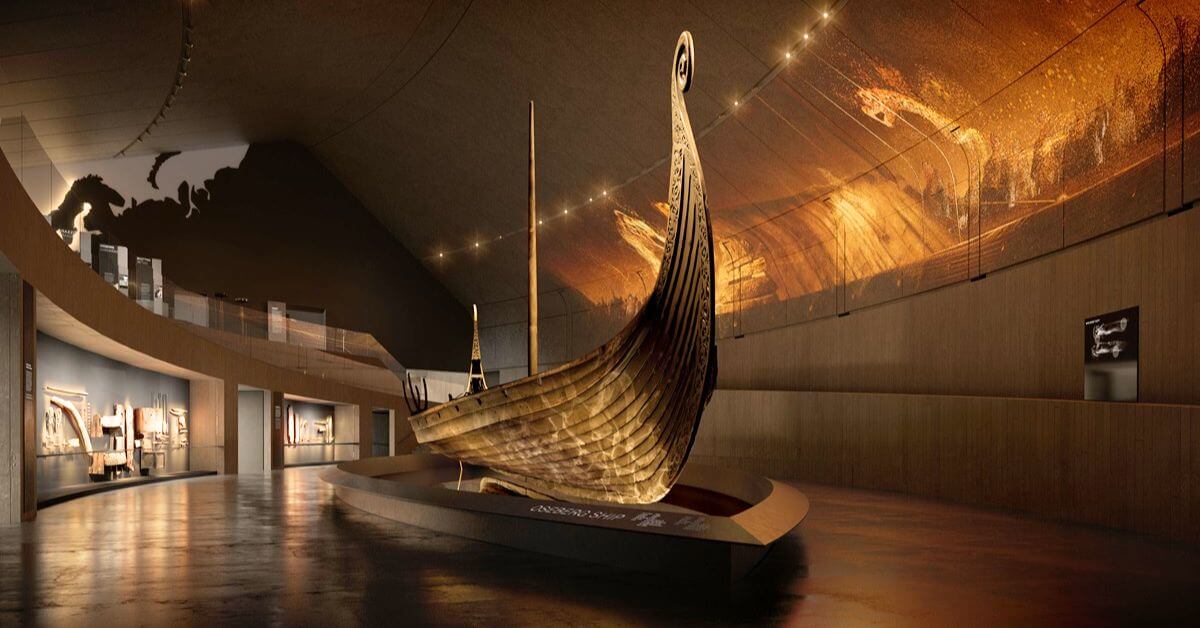
Tunisia Calls Attack On Gaza-Bound Aid Ship “Orchestrated”
September 11, 2025
Workers At South Korea’s Hyundai Shipyards Stage Strike Over Wage Dispute
September 11, 2025

Three Viking ships, over 1,200 years old and among Norway’s most treasured cultural artifacts, have begun their final and possibly riskiest journey to a new home in Oslo.
The first ship to move, the Oseberg, started the painstaking transfer on Tuesday from the old Viking Ship Museum to a newly built extension, the Museum of the Viking Age.
The 100-metre journey, expected to take more than ten hours, involves suspending the fragile oak hull in a heavy 50-ton steel rig and moving it along a ceiling-mounted crane track. The movement is so slow that it is nearly imperceptible to the human eye. Museum officials described it as almost like “sailing in the air.”
The relocation is being carried out because the ships’ old home, a cross-shaped building, was too small and unsuitable for proper conservation. Over the years, the vessels have been exposed to humidity and vibrations, causing the wood to strain and showing early signs that the ships could eventually collapse onto their supports.
Museum director Aud Tonnessen said the new facility aims to preserve these national treasures in optimal conditions for at least another century.
The relocation process is extremely delicate. Curator David Hauer, who has overseen the project for years, explained that the ships have clinker hulls with partially overlapping planks. Any deformation could split the wood between the rivets, causing cracks or irreversible damage. To prevent this, the ships are moved at a painstaking pace of 5.5 minutes per metre.
An oil services company, experienced in high-precision work such as positioning massive structures hundreds of metres below the sea with millimetre accuracy, has been brought in to assist.
Hauer compared the precision needed for the operation to that of moving electron microscopes in hospitals, but on a much larger scale, involving lifting, moving, and setting down ancient ships safely.
The Oseberg, discovered in 1904, is the best-preserved of the three and is richly decorated with intricate carvings. The Gokstad, measuring 23 metres long and five metres wide with room for 32 rowers, is the largest. The Tune, found between 1867 and 1904, is much more decomposed and is believed to have been a particularly fast warship.
All three ships were excavated from separate burial mounds southwest and southeast of Oslo and are named after the locations where they were found.
The Oseberg’s slow journey has already begun smoothly. According to the museum’s social media post, the team covered the first 20 metres without incident. The Gokstad is scheduled for relocation later this autumn, followed by the Tune in the summer of 2026.
The new museum is set to open in 2027, providing climate-controlled conditions designed to maintain the ships’ delicate wood and preserve their centuries-long history. Officials emphasised that while every precaution is being taken, handling the ships always carries some risk due to their age and fragility.
References: NDTV, cbsnews
Source: Maritime Shipping News


